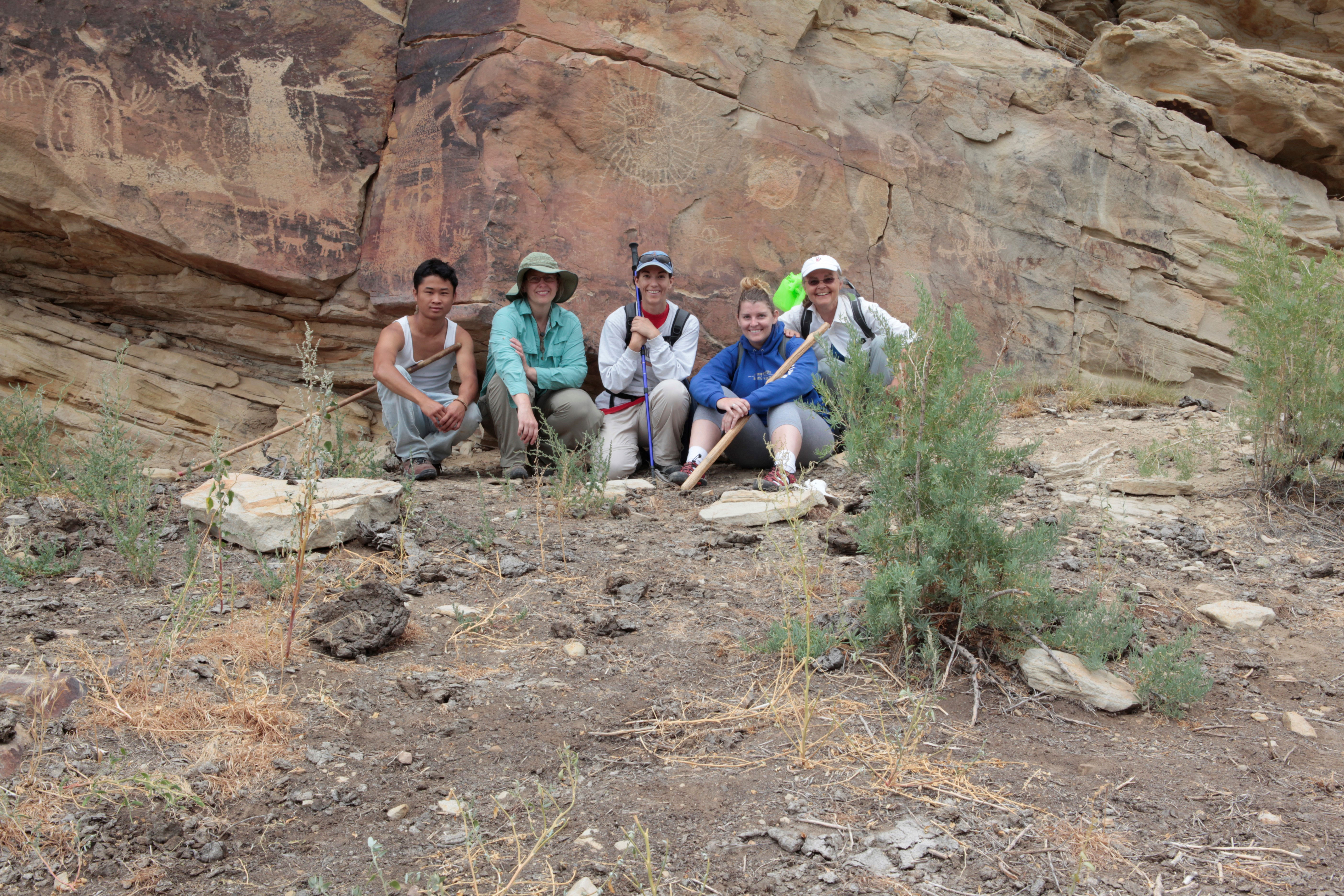
By Amanda Duchsherer
Digital Communication Specialist
amanda.duchsherer@minotstateu.edu
MINOT, N.D. – As a child, Linda Olson learned about rock art and caves in France while pouring over National Geographic and Smithsonian magazines.
“I had no idea my own backyard was full of the same kind of wonderful things,” she said.
In 1987, she took a graduate course in rock art and joined a field study in Colorado, beginning a decades-long career in documenting Native American rock art drawings.
“There are different kinds of rock art and some of it is biographic, where you have war deeds that they would draw on the rocks, or sometimes it is ceremonial. Sometimes it has to do with stories, sometimes migrations. History is important, and this is part of history,” Olson said. “For many years, the Native American rock art was not studied by archeologists. They studied remains that they could verify the age of but because rock art was on the walls, the technology didn’t allow them, at the time, to associate it with any of the cultural materials that they were finding in their digs so it got ignored for many years.”
As techniques were developed to date pictographs and petroglyphs in the 1990s and 2000s, archeologists began to realize their importance, and large pools of people came forward to take photographs and documentations of the works.
“Initially, I developed a reputation for developing very accurate recordings,” the Minot State art professor said. “At the time, you put this clear prepared acetate, an archivable material that lasts a long time, over the rock art, and then you used archivable pens to draw the rock art. I took that to the nth degree by tracing around every peck mark that was there. That way you removed some of the subjectivity that can arise.
“Frequently, people will look at the rock, see something, and document what made them think that, and ignore other things. But if you’re there and just doing individual marks, then you know you’re not adding what you think it is to it. Our brains want to make a complete picture that we understand — its confirmation bias at its finest.”
With the advances of computer technology, digital photography, and geographic information systems, Olson’s techniques have changed and much of her documentation work can now take place away from the rock art. Field verification, however, is still an important part of the process.
“There is a funny interplay between natural features and the petroglyphs, because things erode, rock grows, there’s secretions that form, you get that varnish that forms over it — so just in looking at it carefully and trying to look at the natural things you can come to realize what is and what isn’t natural,” she said. “But it does take some training.”
Olson engages Minot State students in that training, often taking groups along when she goes on her site visits.
“Art students tend to look carefully at things, and they can adapt pretty quickly to see the rock art, but initially a person won’t see it. This primary research is really what it’s all about,” she said. “If you can engage students in research, it’s really transformational learning that takes place.”
It can also become part of your identity. In 1993, Olson was asked to record a site located on private land near Thermopolis, Wyoming. It was there she met the water ghost woman, an image that often emerges in her art.
“The water ghost woman is a story from the Shoshone, and she was a powerful ally to good people and a powerful enemy to bad people. I always just identified with her. She has braids and a buckskin dress and breasts, and there are various versions of her in the rock art in that study area,” Olson said.
“I was invited to be in a show called ‘Women Self-Images,’ and I thought, self-image? We need an image that is really strong and powerful. I always find a need for a strong female image in our patriarchal society, so I gave her a headdress, which is a sign of honor. She was a printmaking artwork, but I’m also a ceramist, and she sneaks in even when I’m doing demos for my students.”
About Minot State University
Minot State University is a public university dedicated to excellence in education, scholarship, and community engagement achieved through
rigorous academic experiences, active learning environments, commitment to public service, and a vibrant campus life.
Published: 03/10/20




